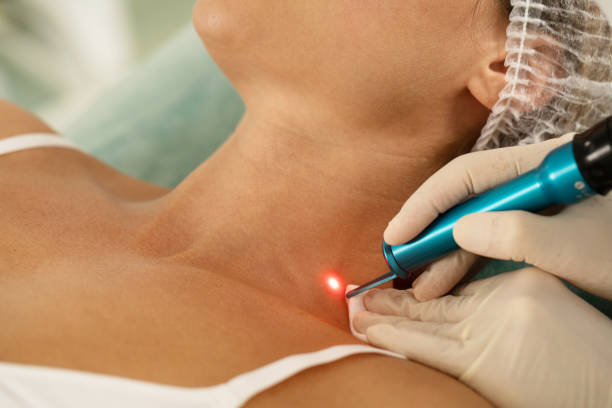How to choose the right treatment for skin pigmentation? A look at the latest techniques

How to choose the right treatment for skin pigmentation? A look at the latest techniques
Skin pigmentation is one of the most common skin problems that affects overall appearance and self-confidence.

The causes of pigmentation vary from excessive sun exposure, hormonal changes, acne, to skin injuries.
With the growing demand for effective and safe solutions, many advanced techniques have emerged that help treat pigmentation and improve the skin’s appearance.
In this article, we provide you with a comprehensive guide to choosing the right treatment for your skin pigmentation, along with an in-depth look at the most prominent and latest techniques available in the field of cosmetic medicine.
First: What is skin pigmentation?
Skin pigmentation is a change in skin color caused by an increase or decrease in the production of melanin, the pigment responsible for the color of the skin, eyes, and hair.
Pigmentation usually appears as dark spots in various areas of the face or body and can be either superficial or deep, depending on the concentration of melanin in the skin layers.
Also learn about Laser hair removal in Turkey – Nera Med Center
Second: Types of skin pigmentation
To understand the appropriate treatment, it is essential to know the type of pigmentation you have. The main types include::

Melasma:
It commonly appears in women, especially during pregnancy or when using hormonal contraceptives, characterized by brown patches on the forehead and cheeks.
Sunspots:
Also known as age spots, these result from chronic sun exposure without protection.
Post-Inflammatory Hyperpigmentation (PIH):
Appears after acne, wounds, or skin inflammations and is common in individuals with darker skin tones.
Freckles:
Small spots that usually appear due to genetic factors and become more noticeable with sun exposure.
Third: Steps to choose the right treatment
Gradual treatment approach:
In some cases, the doctor starts with a simple topical treatment before moving to more advanced techniques to ensure effectiveness and minimize side effects.
Accurate diagnosis:
It is essential to visit a specialized dermatologist to assess the type and depth of pigmentation, using tools like Wood’s Lamp or digital imaging techniques.
Determine skin type:
Each skin type reacts differently to treatments. For example, darker skin is more prone to irritation and post-treatment hyperpigmentation.
Medical history:
A history of skin allergies, diseases such as lupus, or pregnancy may affect the choice of treatment.
Fourth: Latest techniques for treating skin pigmentation
Laser:
Laser technology is one of the most effective methods, targeting pigmentation without affecting the surrounding skin.

The most popular types of laser:
- Q-Switched Nd:YAG: Effective in removing freckles and superficial melasma.
- Fractional Laser: Treats deep pigmentation and stimulates collagen production.
- Pico Laser: An advanced technology that reduces the number of sessions and suits all skin tones.
Medical Topical Creams:
Contain ingredients like hydroquinone, tretinoin, and vitamin C, prescribed for mild to moderate cases.
Chemical Peeling:
Uses acids such as glycolic or salicylic acid to remove the superficial skin layer, helping to reduce pigmentation and improve skin texture.
Mesotherapy:
Involves injecting a mixture of vitamins and active ingredients into the skin layers to improve skin tone and reduce pigmentation appearance.
PRP Therapy (Platelet-Rich Plasma):
Uses plasma extracted from the patient’s own blood to stimulate cell regeneration and improve skin tone uniformity.
Also learn about Price of Rejuvenation Injection in Turkey – Nera Med Center
Fifth: Post-treatment tips
Keep the skin moisturized regularly and consume a diet rich in antioxidants.
Use daily sunscreen with an SPF of at least 50.
Avoid direct sun exposure during the treatment period.
Do not use cosmetics containing alcohol or irritating substances.
Follow the treatment plan prescribed by your doctor and do not stop suddenly.

Sixth: Can pigmentation return after treatment?
Yes, pigmentation can return if preventive measures are not followed, especially with sun exposure or hormonal changes.
Therefore, a healthy lifestyle and prevention are essential factors to maintain long-term treatment results.
Conclusion
Treating skin pigmentation is not a random process; it requires an accurate diagnosis and a comprehensive, personalized treatment plan for each individual.
By consulting a specialist at Nera Med and choosing the appropriate technique, you can achieve effective and safe results that restore your skin’s radiance and noticeably even out its tone. Don’t hesitate to take the first step towards clearer, more confident skin.
Contact us via WhatsApp for more information and free consultations.
For more information and articles, click here.








